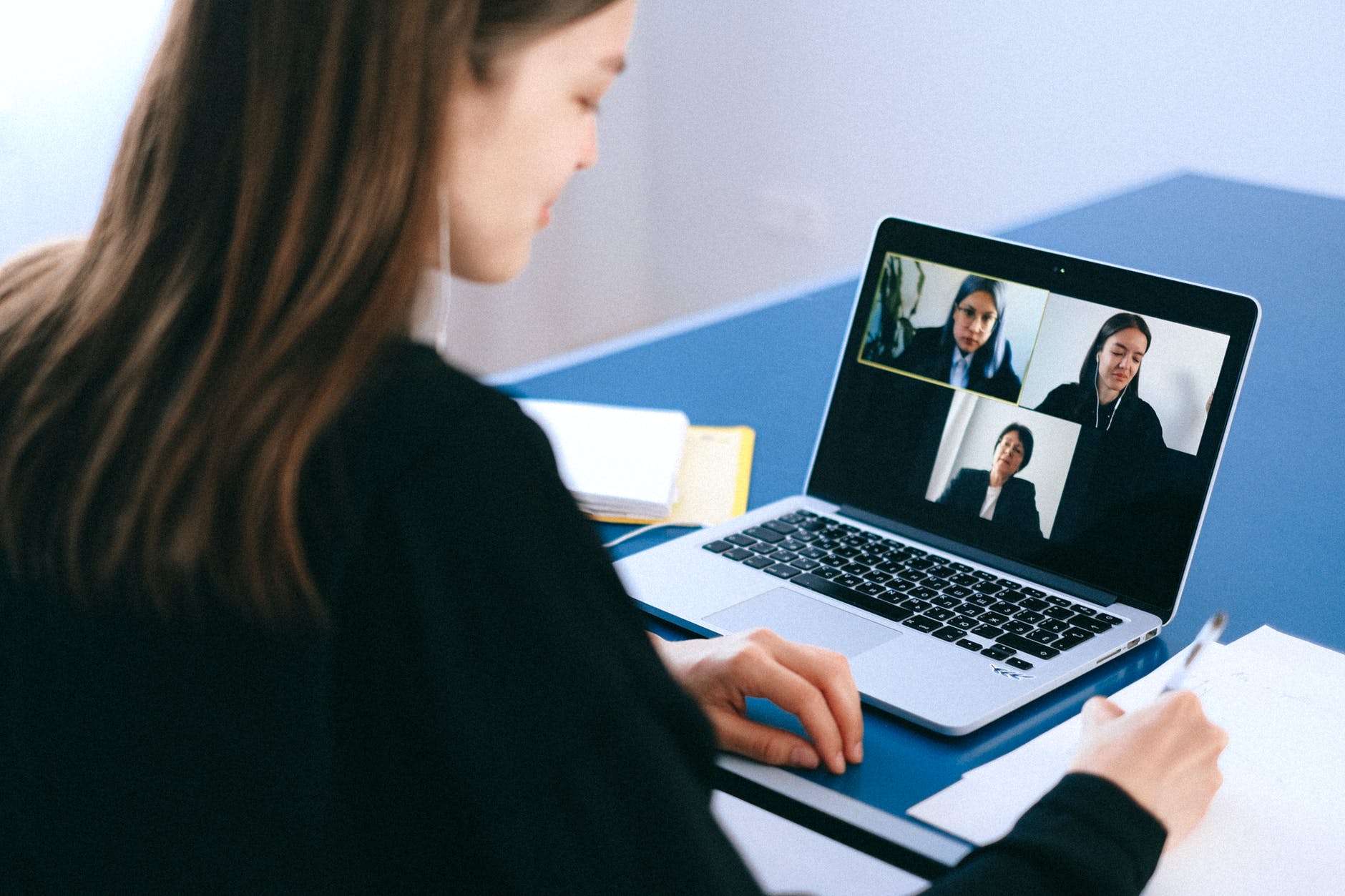As remote work becomes more and more common, recruiters are faced with the prospect of building teams that might seldom or even never meet each other in person.
Data from Stanford University suggests that 42% of Americans worked from home in 2020 and that number is likely to remain static for some time. Building teams in this environment means paying extra attention to recruitment, team engagement, and how individuals work together, because they won’t have the benefit of face-to-face contact.
These 5 tips to build good teams in remote environments focus on shifting hiring away from looking at individual strengths and towards building a team structure and processes that facilitate team strength.
Start with Team Structure
Remote team structure is essential to creating a solid team with clear goals and responsibilities. While structure is a standard part of team building, it’s more important when you need it to hold the team together.
Structure ensures that everyone works towards a single goal, rather than disparately doing tasks assigned to them from a higher up. Team structure defines how, what, and why a team exists. It should highlight the following.
Mission
Why does the team exist? What is the work the team was made to do? What does team success look like? What does successful work do for the organization? How will the team measure that success in an ongoing way?
Missions should always apply to ongoing work, never to specific projects. E.g., (good) “To develop new features and contribute to the value of the product for the customer” versus (bad), “Building the new invoicing feature in the application”.
Goals
Goals take the mission and break it down into real targets they can work for. Team goals constantly change. In most cases, goals shouldn’t extend out over more than a 6–12-month period.
You can use any goal system you want but S.M.A.R.T. is a popular one. S.M.A.R.T. stands for Specific, Measurable, Achievable, Relevant, and Time-Bound.
In the context of the above-stated mission, that might look like:
- Specific – Build the new invoicing feature
- Measurable – Satisfy customer requests for invoicing in the tool
- Achievable – (The team would have to contribute to this)
- Relevant – Building the invoicing feature adds to value for customers because they’ve been requesting it
- Time-Bound – Within 6 months
Roles and Responsibilities
Roles and responsibilities have something of a “chicken and egg” issue, in that you need roles to assign responsibilities, but you need responsibilities to assign roles. If the functions in your team are completely new, you can consider using a pre-built responsibility matrix for the field and tweaking it over time to better suit your needs. If you already have similar roles in the organization, check those to ensure they are relevant and copy them over.
Increasingly, teams are using team responsibilities rather than role responsibilities, so that they can delegate those responsibilities out among themselves. However, it’s still crucial to have a final signoff on items such as quality, direction, etc., so that the team moves forward even if they cannot agree on specifics. The important thing is that you can hand a set of responsibilities to the team and allow them to delegate and remain responsible.
Use a Team Building Matrix
Different personalities can clash a great deal. That’s easy enough to resolve in person, where people have to see each other every day, but much harder in an online environment. Here, communication is often hampered by the fact that text loses the inflection the writer might have intended, leading to more miscommunication.
Building teams around communication means creating a balanced team with different types of team players so that everyone can seamlessly communicate with at least one other person.
DISC is one very popular team building matrix. Here, you use personality assessments to determine how individuals work, communicate, and interact together. DISC then offers recommendations for matching different types of personalities into teams, so that they communicate and work well together.
Why is this important? If one person wants to be left largely alone to do their own thing while someone else is very outgoing and wants to spend work time in calls to ensure ongoing validation, both team members will suffer. If you know how each individual communicates, you could better put person A into their own team with other loners and person B into a team built around quick response times and communication.
Establish a Communication Process
Lack of clear processes around communication can be detrimental to a remote team. This is especially true if your team works in different time zones. It’s crucial to define how work should be completed when it should be completed, how work is carried out, what is good communication, and when communication is allowed.
Most teams already have at least some communication worked into their processes. Remote teams should further work out details like:
- When are team members allowed to talk to each other?
- What does delegation and hierarchy look like?
- What times are teams allowed to message each other?
- What channels should teams use/not use to talk to each other
- Are interruptions allowed? Are side conversations? Are chats allowed during calls?
- How and how often video and voice calls should be used and why
- How long do team members have to respond to email and chat?
- What constitutes respectful behavior towards other team members?
- How should you resolve conflicts?
- Who makes the final call on each responsibility?
- What does good communication look like? Is communication training, like emotional intelligence, provided as part of the team?
- What does documentation look like? How do team members keep other team members informed of progress, tasks, and current responsibilities?
The shorter team communication processes are, the more likely the team will actually use them. Still, it’s important to answer basic questions and create ground rules so that individuals have a structure to work inside of without alienating each other or risking basically working on their own.
Integrate Team Engagement as Part of Work
Maintaining team engagement has remained a top priority for organizations over the last decade. At the same time, it becomes more challenging for remote teams. Individuals who cannot see each other and have fewer mechanisms to collaborate and interact will be less engaged. It’s critical to work engagement in to the work process. This can take many forms.
For example, some organizations leverage a combination of tools to engage teams in their work and with each other:
- Integrate goalposts and tracking into work, so teams have goals to work towards and to motivate themselves with
- Directly link work to output and results so that teams understand their work is meaningful
- Link quality of work to performance bonuses and make bonuses team-based rather than individual-based
- Use tools like 360-feedback to put individual performance review in the hands of the team
- Use Agile work methods, so teams have ownership of their own work
- Use Agile budgeting, rather than “use it or lose it” methods
- Integrate regular video calls into the work process, so that people frequently see and talk to each other.
- Offer paid team-building exercises. An hour of paid digital game night a month will go a long way towards ensuring that your teams can have fun together.
Essentially, teams need to have ownership of work, they need to know where they are at in that work, and they need to know how it contributes to goals.
Additionally, it’s beneficial to shift performance review away from individual production and towards team performance as a whole, with mechanisms like 360-feedback to ensure that teams can mention when someone isn’t performing.
Integrate Processes into Tooling
Good processes allow teams to function well without relying on good communication. However, processes have to be visible and usable to be effective.
Here, the most effective thing you can do is to integrate processes into tooling. This might take the form of delineating work processes and communication into Kanban boards. It might also mean using software that integrates into Jira or Slack, so users can share work as part of the tool. If processes aren’t part of daily work, no one will use them.
Remote work complicates team building. At the same time, integrating strong processes, good structure, and building teams around their ability to communicate and work together gets over many of these issues.
If you follow up by ensuring that teams stay motivated with clear goals and team purpose, by linking work to value, and by giving teams ownership of work, there’s no reason why remote teams cannot be every bit as engaged and productive as those in an office together.




